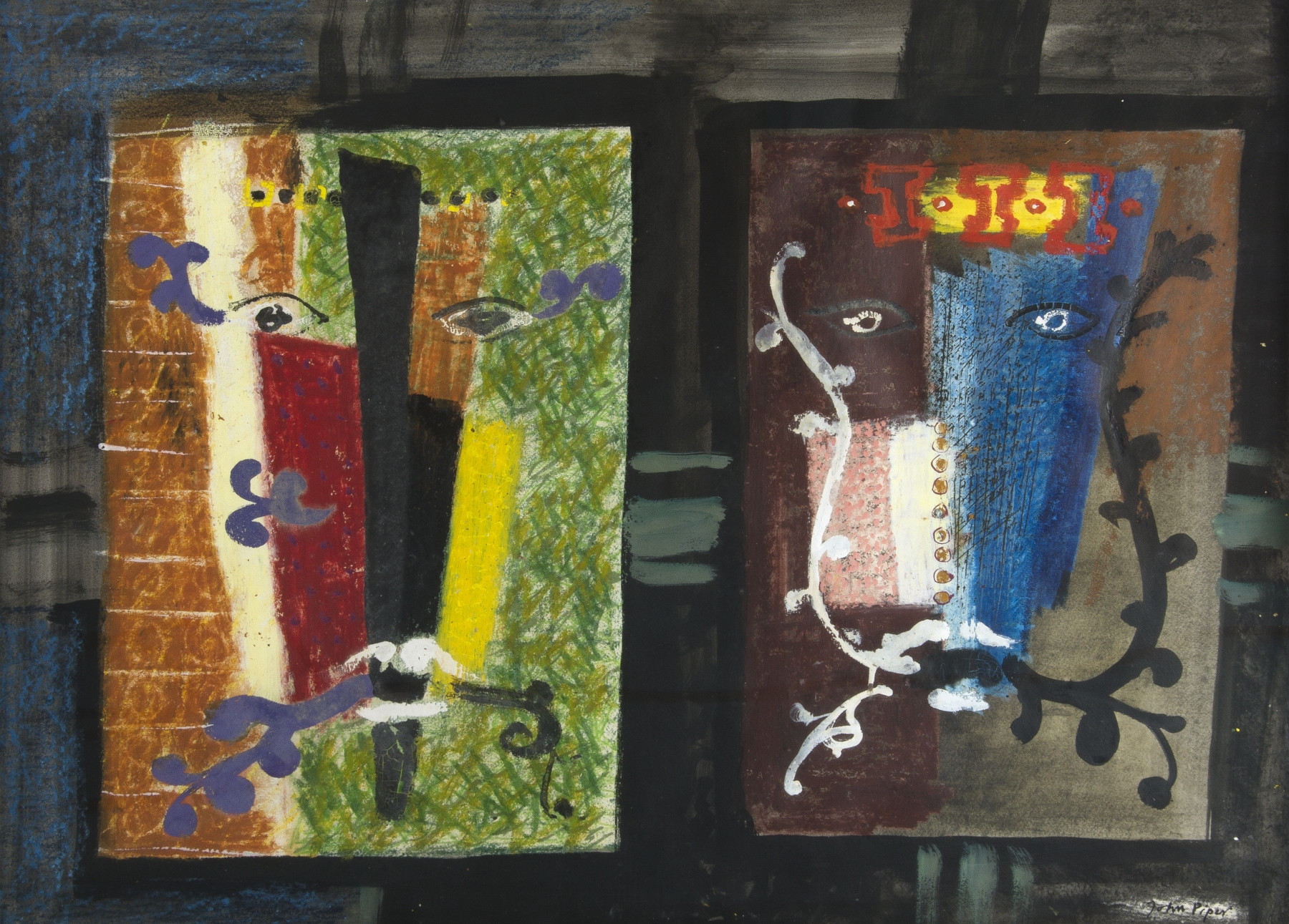
(click image to enlarge)
From early in his life, John Piper was attracted to the image of the ‘Green Man’. This symbol of rebirth was central to British folklore and traditional art for many centuries, and often appears in carvings on the ecclesiastical buildings that Piper loved. It was the main inspiration for the ‘foliate heads’, which he began to draw and paint in 1953, and which so pervaded the various aspects of his creativity that it became one of his signature motifs.
The present work is likely to be one of Piper’s earliest essays on the theme, and relates closely to two coloured lithographs, also of pairs of heads, which were produced in 1953 (Nos 83 & 84 in Quality and Experiment: The Prints of John Piper – A Catalogue Raisonné 1932-91, London: Lund Humphries, 199). Many further prints, of both individual and paired heads, followed. While most were lithographs, others were screenprints (1975) and etchings with screenprint (1983).
Piper also introduced foliate heads into many of his design projects, of which the following examples from across four decades indicate the range. In 1955, two heads appeared on a screen-printed cotton furnishing fabric (for David Whitehead and Sons of Rossendale, Lancashire). In 1964, twelve of them featured in the stained glass panels of a screen (in the Wessex Hotel, Winchester). In 1975, a single head dominated a tapestry (commissioned by Orde Levinson, and executed by Ibenstein Weavers of Dordabis, Namibia). Then again, in 1989, a single head provided the basis for ‘The Green Man Plate’ (for Wedgwood).
Like these many manifestations of Piper’s favourite motif, the present work displays the artist’s delight in exuberant fantasy and his ability to reinterpret an ancient symbol through such filters as a knowledge of English Romanticism and an experience of working in the theatre.